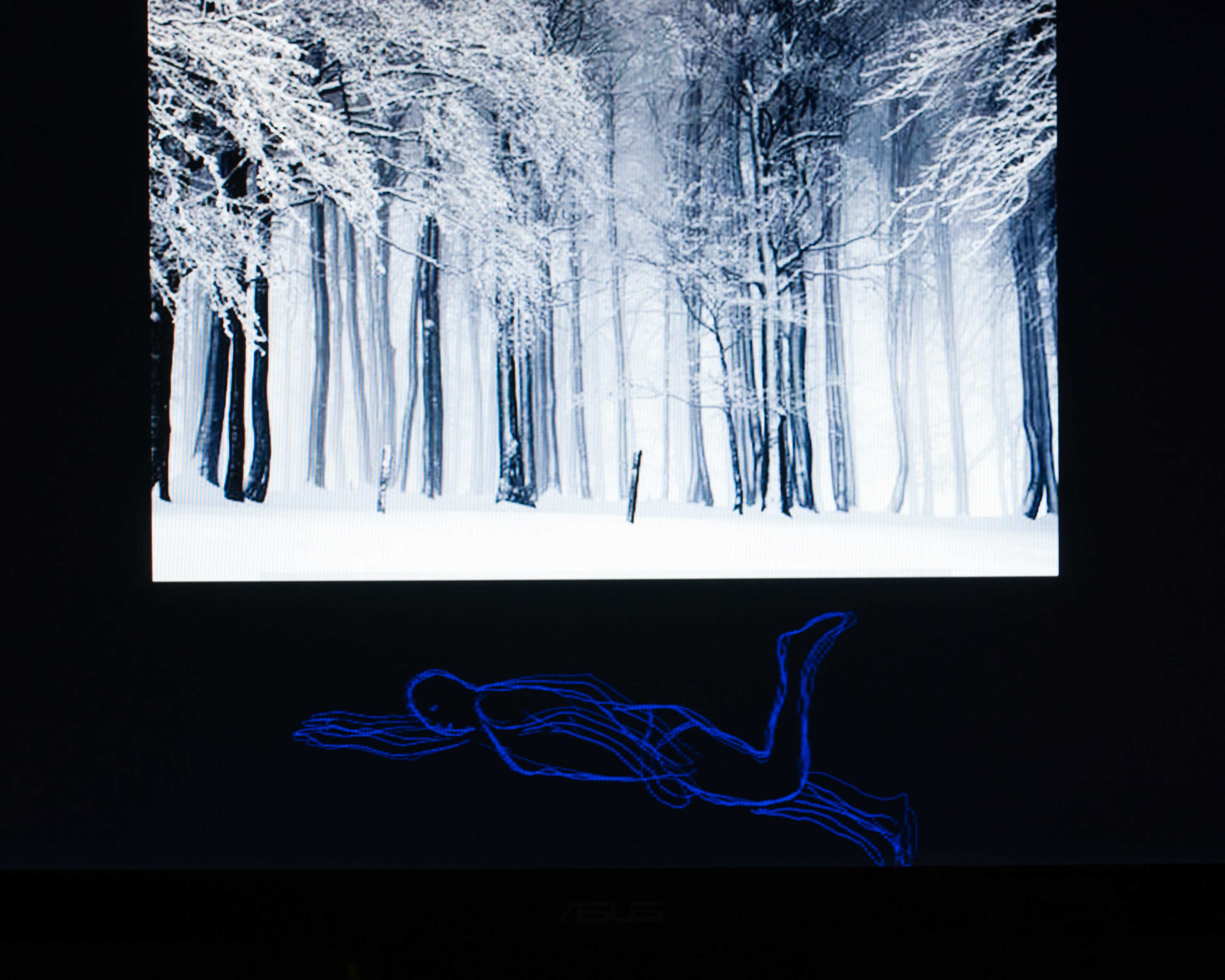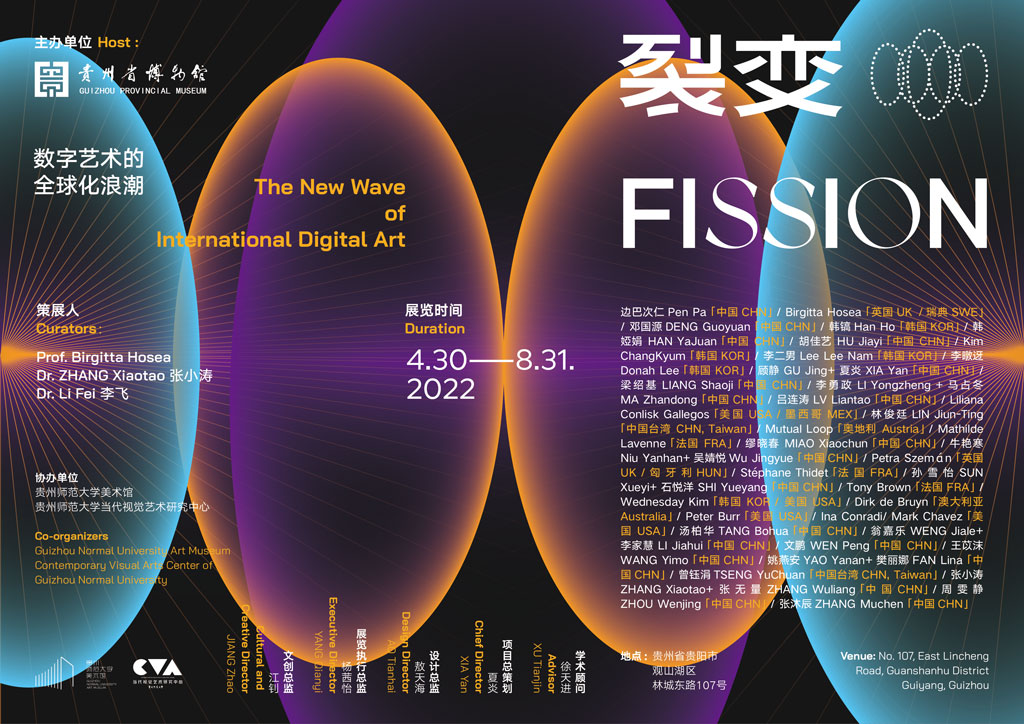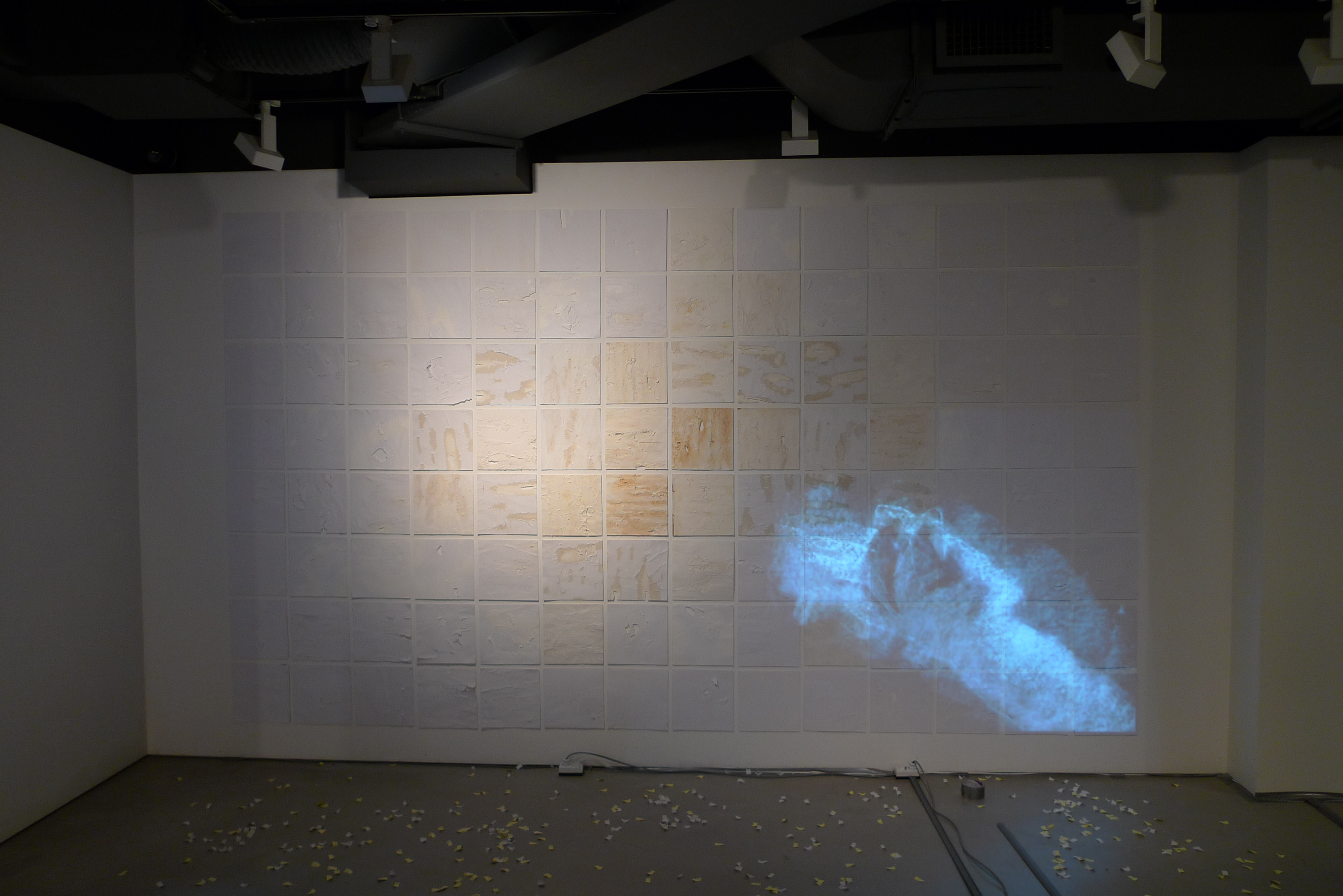
Boundary Crossings is a biennial institute for contemporary animated arts that was established in 2009 by artist, Rose Bond, at the Pacific Northwest College of Art in Portland, Oregon, USA. The two-week studio programme includes a hands-on exploration of experimental animation as spatial experience, interdisciplinary moving image practice, kinetic sculpture and expanded cinema. This is complimented by readings of related critical theory, a programme of artists talks and screenings and culminates in an exhibition. Participants include working professionals as well as graduate and upper-level undergraduate students with an interest in time-based arts and a desire for an immersive studio experience on the cutting edge of animation and fine art.
Professor and Department Chair of Animated Arts at PNCA, Rose Bond‘s personal practice builds on her experience of frame-by-frame direct animation to create spectacular, site-specific, architectural animation projections in public spaces. Each Boundary Crossings is also co-curated and co-taught by a different international practitioner, who defines the theme and conceptual direction. This year’s theme, Performing Identity was chosen by visiting artist, Birgitta Hosea (myself), Head of Animation at the Royal College of Art in London. In addition, it was supported by guest artist, Carl Diehl, with Studio Manager, Maxwell Brown, and assisted by Sarah Hickey.

The work produced during Boundary Crossings goes beyond the short film format in investigating in what ways the concepts behind the films can expand out of the screen and be presented to others in an exhibition context. All of these works were conceived of and produced in their entirety over a period of two weeks. Each artist has considered the context of the way in which their animation is displayed to create a unique experience in sound, image and space.
Exhibition:

PNCA, Portland, Oregon, USA. Photo: Birgitta Hosea, 2017

Entrance Hall. Photo: Birgitta Hosea, 2017
 Overview. Photo: Birgitta Hosea, 2017
Overview. Photo: Birgitta Hosea, 2017
 Overview. Photo: Ali Gradisher, 2017
Overview. Photo: Ali Gradisher, 2017

Overview. Photo: Ali Gradisher, 2017
 Overview. Photo: Birgitta Hosea, 2017
Overview. Photo: Birgitta Hosea, 2017
Individual Works
Ran Sheng: From My Family Album
Double projection on sculpture. Soundtrack: appropriated Chinese pop music.
“A mixed-media memoir generated by childhood memories through the lens of current circumstances. Using the family photo as a carrier, I explore how childhood experiences have affected the development of my personality – who made me what I am?”
 Photo: Birgitta Hosea, 2017.
Photo: Birgitta Hosea, 2017.


 Photos: Ali Gradisher, 2017
Photos: Ali Gradisher, 2017
Nicole Baker: The Width of a Circle
Black card, sequential prints on acetate, motor, stroboscope. Silent.
“A magic machine made of light and myth, this kinetic sculpture emits visions of a creation tale eminating from primordial history. Contemporary visual storytelling technologies contrast with early animation mechanics to highlight how the power of myth perforates the human mind.”


 Photos: Ali Gradisher, 2017
Photos: Ali Gradisher, 2017
Terese Cuff: Complains and Concerns
Extended animation split between two projectors on papier mȃché relief. Soundtrack: recreated voice recordings inspired by complaints made by children in the classroom.
“Exploring the disconnect between conflicted internal and external voices, from the petty to the disturbing.”

Photo: Birgitta Hosea, 2017.


 Photos: Ali Gradisher, 2017
Photos: Ali Gradisher, 2017
Jacob Houseman: A Very, Very Exclusive Performance
Live performance with interactive database of animation. Silent.
“All the fair ladies and gentlemen of polite society have tonight in their planners for this very, very exclusive performance, which is a very, very anticipated one. If you mean to secure your place among the rich and famous, you absolutely must view the very, very exclusive performance.”

Photo: Birgitta Hosea, 2017


 Photos: Ali Gradisher, 2017
Photos: Ali Gradisher, 2017
Sol Fantasma: Shapeshifter
Rear projection of metamorphosing animals on tissue paper. Silent.
“You aren’t the same person twice. Who you’re with influences how you act. Who are you really?”

 Photos: Ali Gradisher, 2017
Photos: Ali Gradisher, 2017
Briar Parks: The Eyes of Izangi
Interactive animation with sculptural objects as controllers. Silent.
“This interactive installation is inspired by animal mimicry, exploring how imitation blurs the line between Self and Other.”



 Photos: Ali Gradisher, 2017
Photos: Ali Gradisher, 2017


 Photos: Birgitta Hosea, 2017
Photos: Birgitta Hosea, 2017
Amy Love: Shalom
Cut out animation on TV monitor with associated objects. Soundtrack: unaccompanied personal recording of traditional song
“The Artist shares her lived experience of trauma and recovery.”
 Photo: Birgitta Hosea, 2017
Photo: Birgitta Hosea, 2017


 Photos: Ali Gradisher, 2017
Photos: Ali Gradisher, 2017
Ari Gabriel: Summer of the Yellow-Dry End
Stop motion video, associated objects, cabinet. Soundtrack: Spoken word poetry.
“Memories were left as dreams and fled into folklore, leaving something like an afterimage on the other side of an eyelid. The dry trees calling fire, the smell of hot stone, the dust stirred by crows, dreams of a gleam of a knife or scissors on a distant hill. In the hush of the summer night, the changeling was born of the Grain Mother.”
 Photo: Birgitta Hosea, 2017
Photo: Birgitta Hosea, 2017



 Photos: Ali Gradisher, 2017
Photos: Ali Gradisher, 2017
Mike Nixon: Ocean – Sea of Faith
Animations on three monitors. Soundtrack: various foley recordings of water and rowing,
“Water can give or take away, as it is in life or death. The cycles of nature, day and night, season to season. The swimmer moves through water, clearing space and releasing it as they progress. There is the possibility of transformation through the most traumatic of experiences by the rhythms of life. We are water and water is us.”
 Photo: Birgitta Hosea, 2017
Photo: Birgitta Hosea, 2017

 Photos: Ali Gradisher, 2017
Photos: Ali Gradisher, 2017
T.J. Orlowski: KINET-X
Pre-recorded and user-generated animation. Silent.
“This work explores the kinetic signature of an individual person’s specific motion through active participation.”




 Photos: Ali Gradisher, 2017
Photos: Ali Gradisher, 2017
The Process
At this year’s Boundary Crossings we started with the idea of how to convey subjective experience. Can animation can be used to express private, inner worlds? Can our personal identities be expressed without using verbal language? And if so, what makes an audience interested in another’s personal experience? The very notion of how personal identity is constituted and expressed was examined through Judith Butler’s idea that our identities are so fragile that they need to be constantly reaffirmed through repetitive personal rituals that confirm who we are. For example, in order to be a man, you make sure that you walk like a man. Animation is the perfect art to look at the personal and the subjective, because it is not limited to what can be photographed and can express thoughts direct from the imagination. Through animation, gesture and ritual can be analysed and reflected upon. This was further developed by discussions around glitch feminism – that gender may in itself be a faulty machine.
The workshops included Isadora and physical computing by Carl Diehl, animated installation: expressing ideas through spatial context by Rose Bond and myself, projection techniques by Rose Bond and practice-based research and development of concepts by myself. I also gave a talk on my own practice that had been informed by extensive research into Victorian spirit mediums and screened a programme of experimental animations from the Royal College of Art. Participants were encouraged to be mutually supportive through peer review and connected reading sessions. To develop the theme of performing identity as well as to serve as a warm-up and possible starting point, I conducted a drawing workshop inspired by performance theory in which the choreographic principles of Rudolph Laban were used to build a vocabulary of emotional mark making and Method acting techniques were used to engage with affective and muscle memories.




Photos: Birgitta Hosea, 2017





























 Overview. Photo: Birgitta Hosea, 2017
Overview. Photo: Birgitta Hosea, 2017 Overview. Photo: Ali Gradisher, 2017
Overview. Photo: Ali Gradisher, 2017
 Overview. Photo: Birgitta Hosea, 2017
Overview. Photo: Birgitta Hosea, 2017 Photo: Birgitta Hosea, 2017.
Photo: Birgitta Hosea, 2017.

 Photos: Ali Gradisher, 2017
Photos: Ali Gradisher, 2017

 Photos: Ali Gradisher, 2017
Photos: Ali Gradisher, 2017


 Photos: Ali Gradisher, 2017
Photos: Ali Gradisher, 2017


 Photos: Ali Gradisher, 2017
Photos: Ali Gradisher, 2017
 Photos: Ali Gradisher, 2017
Photos: Ali Gradisher, 2017


 Photos: Ali Gradisher, 2017
Photos: Ali Gradisher, 2017

 Photos: Birgitta Hosea, 2017
Photos: Birgitta Hosea, 2017 Photo: Birgitta Hosea, 2017
Photo: Birgitta Hosea, 2017

 Photos: Ali Gradisher, 2017
Photos: Ali Gradisher, 2017 Photo: Birgitta Hosea, 2017
Photo: Birgitta Hosea, 2017


 Photos: Ali Gradisher, 2017
Photos: Ali Gradisher, 2017 Photo: Birgitta Hosea, 2017
Photo: Birgitta Hosea, 2017
 Photos: Ali Gradisher, 2017
Photos: Ali Gradisher, 2017



 Photos: Ali Gradisher, 2017
Photos: Ali Gradisher, 2017





































